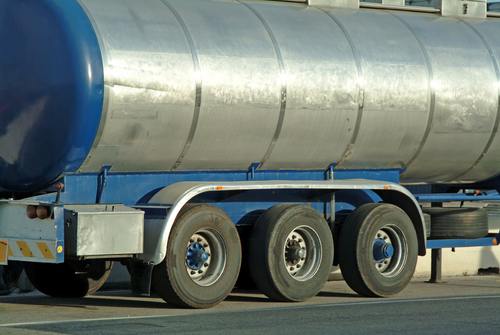The FMCSA announced that a new rule regarding hazmat carriers will soon go into effect.
The agency and the Pipeline Hazardous Materials Safety Administration amended the FMCSR’s and HMR’s rules, prohibiting a CMV driver who is transporting certain hazardous materials or toxins from entering onto a “highway-rail grade crossing unless there is sufficient space to driver completely through the grade without stopping.”
The FMCSA says the rule was adopted to reduce truck-train crashes.
The proposed rule was first published in the agency’s notice of proposed rulemmaking (NPRM) on January 28, 2011.
The FMCSA and the PHMSA estimate that the rule could save approximately $946,000.
“This consists of $473,000 in reduced injuries, $1,800 in reduced hazardous material spills, $33,000 in reduced highway property damage, and $438,000 in reduced costs for train derailments. Total implementation costs per year are estimated to be $302,300 in the first year, based on the added costs to State enforcement agencies of administrative, enforcement, or training activities,” the FMCSA states.
The ATA and OOIDA have expressed concern over the rule stating that there are logistical challenges in implementing and enforcing the rule.
OOIDA said the agencies falsely assumed that drivers are aware of all crossings with inadequate crossing space.
“While we acknowledge commenters’ concerns, FMCSA and PHMSA do not believe the logistical challenges warrant a further delay in issuing the rule. The rule places upon drivers the responsibility to approach grade crossings with caution and to avoid going through the crossing unless there is enough room to completely clear the tracks without stopping,” the FMCSA responded.
“In addition, the Agencies remind all those involved with the arrangement for transportation services that the National Transportation Safety Board (NTSB) has found situations where shippers and receivers often know of the logistical and physical challenges truck drivers would face in getting to their loading and delivery locations, yet fail to communicate those challenges to the carrier and driver. Therefore, motorcarriers and brokers should ask shippers and receivers about any logistical or physical challenges that might exist near, or on the roads leading to, loading and delivery locations.”
In June 2013, the Federal Railroad Administration released an app for iPhone and iPad users. The Rail Crossing Locator app provides users with access to grade crossing inventory information and accident data from the GCIS database. The application allows users to: locate crossings by USDOT Crossing ID, address or geo-location; access inventory records submitted by states and railroads; and view accident history. Users can also select from multiple base map features to see the crossing location, expand or narrow the buffer radius of a location, or get detailed information about a specific crossing. The inventory record for a public crossing will provide information about the presence of a nearby intersection as follows: less than 75 feet, 75 to 200 feet, and 200 to 500 feet and if the intersection has a traffic signal. Although this app will not provide complete information to ensure compliance with the rule, it will assist drivers in more strategically planning their routes.
There is an excepting to the rule. The Nebraska Department of Roads and OOIDA recommended that the rule allow for an exception when there is no other reasonable alternative route available.
The rule goes into effect on October 25, 2013.
